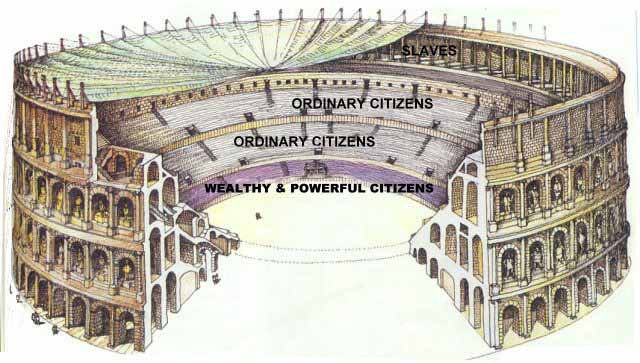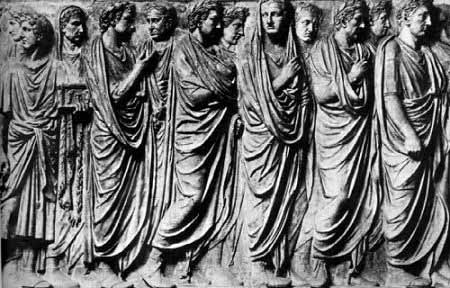Introduction

Historically, “Roman law” also denotes the legal system applied in most of Western Europe, until the end of the 18th century. In Germany, Roman law practice remained longer, having been the Holy Roman Empire (962–1806); thus the great influence upon the civil law systems in Europe. Moreover, the English and North American Common law also were influenced by Roman law, notably in the Latinate legal glossary — stare decisis, culpa in contrahendo, pacta sunt servanda. In contrast, Eastern Europe, though influenced by the Byzantine Empire, were not much influenced by the jurisprudence of the Corpus Juris Civilis; however, they did accept the Roman influence of the Farmer's Law.
Before the Twelve Tables (754–449 BC), private law comprised the Roman civil law (ius civile Quiritium) that applied only to Roman citizens, and was bonded to religion; undeveloped, with attributes of strict formalism, symbolism, and conservatism, i.e. the ritualpractice of mancipatio (a form of sale). The jurist Sextus Pomponius said, "At the beginning of our city, the people began their first activities without any fixed law, and without any fixed rights: all things were ruled despotically, by kings". It is believed that Roman Law is rooted in the Etruscan religion, emphasising ritual.
The Twelve Tables

The first legal text is the Law of the Twelve Tables, dating from mid-fifth century BC. The plebeian tribune, C. Terentilius Arsa, proposed that the law should be written, in order to prevent magistrates from applying the law arbitrarily. After eight years of political struggle, the plebeian social class convinced the patricians to send a delegation to Athens, to copy the Laws of Solon; they also dispatched delegations to other Greek cities for like reason.In 451 BC, ten Roman citizens were chosen to record the laws (decemviri legibus scribundis). For the period in which they performed this task, they were given supreme political power (imperium), while the power of the magistrates was restricted. In 450 BC, the decemviri produced of the laws on ten tablets (tabulae), but was regarded unsatisfactory by the plebeians. A second decemvirate is said to have added two further tablets in 449 BC. The new Law of the XII Tables was approved by the people's assembly.
Modern scholarship tends to challenge the accuracy of Roman historians. They generally do not believe that a second decemvirate ever took place. The decemvirate of 451 is believed to have included the most controversial points of customary law, and to have assumed the leading functions in Rome. Furthermore, the question on the Greek influence found in the early Roman Law is still much discussed. Many scholars consider it unlikely that the patricians sent an official delegation to Greece, as the Roman historians believed. Instead, those scholars suggest, the Romans acquired Greek legislations from the Greek cities of Magna Graecia, the main portal between the Roman and Greek worlds. The original text of the XII Tablets has not been preserved. The tablets were probably destroyed when Rome was conquered and burned by the Celts in 387 BC.
The fragments which did survive show that it was not a law code in the modern sense. It did not provide a complete and coherent system of all applicable rules or give legal solutions for all possible cases. Rather, the tables contained specific provisions designed to change the then-existing customary law. Although the provisions pertain to all areas of law, the largest part is dedicated to private law and civil procedure.
Early law and jurisprudence
Other laws include Lex Canuleia (445 BC; which allowed the marriage—ius connubii—between patricians and plebeians), Leges Licinae Sextiae (367 BC; which made restrictions on possession of public lands—ager publicus—and also made sure that one of consuls is plebeian), Lex Ogulnia (300 BC; plebeians received access to priest posts), and Lex Hortensia (287 BC; verdicts of plebeian assemblies — plebiscita — now bind all people).
Another important statute from the Republican era is the Lex Aquilia of 286 BC, which may be regarded as the root of modern tort law. However, Rome’s most important contribution to European legal culture was not the enactment of well-drafted statutes, but the emergence of a class of professional jurists (prudentes, sing. prudens, or jurisprudentes) and of a legal science. This was achieved in a gradual process of applying the scientific methods of Greek philosophy to the subject of law, a subject which the Greeks themselves never treated as a science.
Traditionally, the origins of Roman legal science are connected to Gnaeus Flavius. Flavius is said to have published around the year 300 BC the formularies containing the words which had to be spoken in court in order to begin a legal action. Before the time of Flavius, these formularies are said to have been secret and known only to the priests. Their publication made it possible for non-priests to explore the meaning of these legal texts. Whether or not this story is credible, jurists were active and legal treatises were written in larger numbers the 2nd century BC. Among the famous jurists of the republican period are Quintus Mucius Scaevola who wrote a voluminous treatise on all aspects of the law, which was very influential in later times, and Servius Sulpicius Rufus a friend of Marcus Tullius Cicero. Thus, Rome had developed a very sophisticated legal system and a refined legal culture when the Roman republic was replaced by the monarchical system of the principate in 27 BC.
Pre-classical period
In the period between about 201 to 27 BC, we can see the development of more flexible laws to match the needs of the time. In addition to the old and formal ius civile a new juridical class is created: the ius honorarium (so called because praetors were central to the creation of this new body of law and because the Praetorship was an honorary service). With this new law the old formalism is being abandoned and new more flexible principles of ius gentium are used.
The adaptation of law to new needs was given over to juridical practice, to magistrates, and especially to the praetors. A praetor was not a legislator and did not technically create new law when he issued his edicts (magistratuum edicta). In fact, the results of his rulings enjoyed legal protection (actionem dare) and were in effect often the source of new legal rules. A Praetor's successor was not bound by the edicts of his predecessor; however, he did take rules from edicts of his predecessor that had proved to be useful. In this way a constant content was created that proceeded from edict to edict (edictum traslatitium).
Thus, over the course of time, parallel to the civil law and supplementing and correcting it, a new body of praetoric law emerged. In fact, praetoric law was so defined by the famous Roman jurist Papinian (Amilius Papinianus—died in 212 AD): "Ius praetorium est quod praetores introduxerunt adiuvandi vel supplendi vel corrigendi iuris civilis gratia propter utilitatem publicam" ("praetoric law is that law introduced by praetors to supplement or correct civil law for public benefit"). Ultimately, civil law and praetoric law were fused in the Corpus Juris Civilis.
Classical Roman law

The first 250 years of the current era are the period during which Roman law and Roman legal science reached the highest degree of perfection. The law of this period is often referred to as classical period of Roman law. The literary and practical achievements of the jurists of this period gave Roman law its unique shape.
The jurists worked in different functions: They gave legal opinions at the request of private parties. They advised the magistrates who were entrusted with the administration of justice, most importantly the praetors. They helped the praetors draft their edicts, in which they publicly announced at the beginning of their tenure, how they would handle their duties, and the formularies, according to which specific proceedings were conducted. Some jurists also held high judicial and administrative offices themselves.
The jurists also produced all kinds of legal commentaries and treatises. Around AD 130 the jurist Salvius Iulianus drafted a standard form of the praetor’s edict, which was used by all praetors from that time onwards. This edict contained detailed descriptions of all cases, in which the praetor would allow a legal action and in which he would grant a defense. The standard edict thus functioned like a comprehensive law code, even though it did not formally have the force of law. It indicated the requirements for a successful legal claim. The edict therefore became the basis for extensive legal commentaries by later classical jurists like Paulus and Domitius Ulpianus. The new concepts and legal institutions developed by pre-classical and classical jurists are too numerous to mention here. Only a few examples are given here:
- Roman jurists clearly separated the legal right to use a thing (ownership) from the factual ability to use and manipulate the thing (possession). They also found the distinction between contract and tort as sources of legal obligations.
- The standard types of contract (sale, contract for work, hire, contract for services) regulated in most continental codes and the characteristics of each of these contracts were developed by Roman jurisprudence.
- The classical jurist Gaius (around 160) invented a system of private law based on the division of all material into personae (persons), res (things) and actiones (legal actions). This system was used for many centuries. It can be recognized in legal treatises like William Blackstone's Commentaries on the Laws of England and enactments like the French Code civil or the German BGB.
Post-classical law
By the middle of the 3rd century the conditions for the flourishing of a refined legal culture had become less favorable. The general political and economic situation deteriorated. The emperors assumed more direct control of all aspects of political life. The political system of the principate, which had retained some features of the republican constitution began to transform itself into the absolute monarchy of the dominate. The existence of a legal science and of jurists who regarded law as a science, not as an instrument to achieve the political goals set by the absolute monarch did not fit well into the new order of things. The literary production all but ended. Few jurists after the mid-third century are known by name. While legal science and legal education persisted to some extent in the eastern part of the empire, most of the subtleties of classical law came to be disregarded and finally forgotten in the west. Classical law was replaced by so-called vulgar law. Where the writings of classical jurists were still known, they were edited to conform to the new situation.

No comments:
Post a Comment